The Minato Mirai (MM) area of Yokohama is currently transforming into a central hub for the headquarters of Japan’s large companies and R&D centers.
It is the home of businesses such as Fuji Xerox, which has been pioneering Japanese-American business partnerships; the global electronics innovation company Murata Manufacturing, and their newly opening factory; Shiseido, one of the oldest multinational cosmetic companies in the world; and the IT and tech support giant Fujitsu FSAS Inc., which just recently opened a location in MM in 2013.
We spoke with representatives from these 4 businesses to discuss their current initiatives and projects, as well as the potential of Yokohama city.
Featuring (In order of appearance):
- Masatomi Inagaki, Senior Manager, Fuji Xerox Co., Ltd Customer Co-creation Lab
- Ryuichi Ushio, Manager, Open Innovation Promotion Team, Murata Manufacturing Co., Ltd New Business Development Department
- Ryosuke Oketani, General Manager, Fujitsu FSAS Inc. Innovation & Future Center Total Service Promotion Department
- Yuko Nakanishi, Manager, Shiseido Co., Ltd R&D Strategy Department
“What’s important is the creation of new value”
What does “innovation” mean to each of you?
Inagaki (Fuji Xerox): Well, to start, I think innovation is about working with other companies and the community to do things you normally couldn’t, and create those short-term connections. But that’s our perspective because our company engages in direct B2B sales. I believe usually when the term “innovation” is being used, it’s used to mean “technological innovation.” But actually, in my opinion, innovation doesn’t have to be about technology at all. For example, virtually every office in Japan has an all-in-one printer machine, right? That means that very often our company’s salespeople and workers have a direct avenue into those offices. In this very privacy and security-conscious business world, that’s a unique and privileged position to be in. So, because we have those opportunities, we have to pin down what exactly our company can offer, what the companies that we’re interacting with can offer, and how to create further business opportunities from that potential partnership…
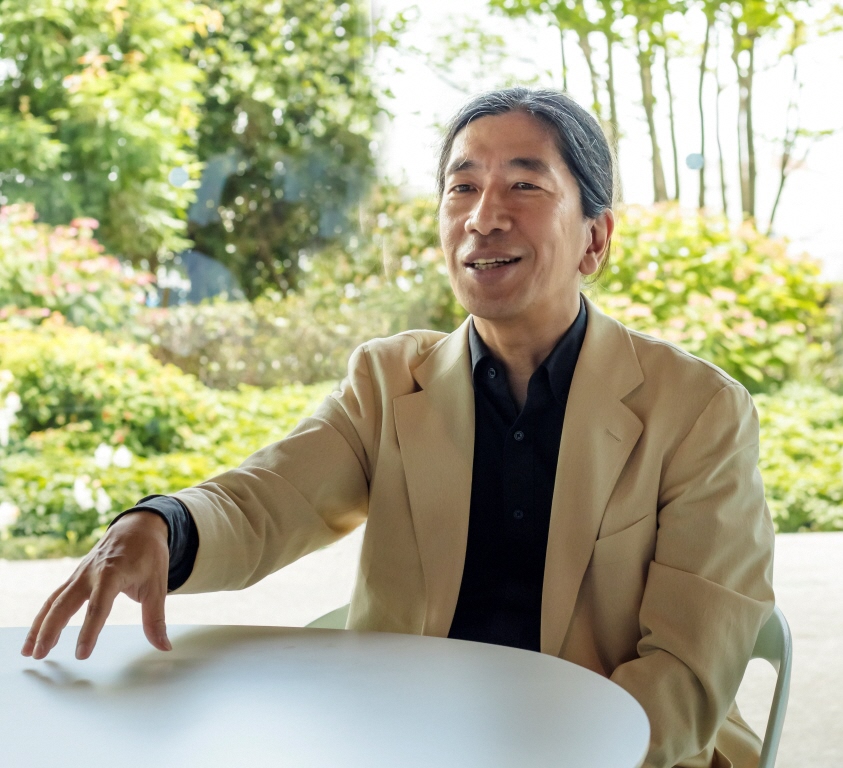
Masatomi Inagaki, Senior Manager, Fuji Xerox Co., Ltd
It has also very, very often been the case, up until this point, that innovation has been seen as matching ideas to demands. But on a higher level, you have to consider your company’s capabilities, your… “business abilities,” for lack of a better term—by which I mean your service ability, your technological ability, your production ability, and so on… Ultimately, I think innovation comes down to figuring out which of your abilities can link with the abilities of another company to produce something new. So it doesn’t necessarily have to be based on technology—that’s only part of it. Innovation can come from so many other places.
Of course it’s easier to talk about matching your company’s ideas to demands than it is to follow through with it, but if there are precedents—if you’re working with companies that have similar issues and needs to your own—you can bring those to the table. And if you can incorporate those other companies’ technological skills into solving those problems, even better. But like I said before, these days there are more options, more “abilities” to connect to in your business partners than just technology.
Nakanishi (Shiseido): I think that “innovation” involves creating new experiences for customers and for people in general. Especially since we’re a cosmetics company, I tend to think of it as creating experiences related to “beauty.” Like Mr. Inagaki said, it’s much broader than just ideas and needs, but I think it’s almost always connected to the average consumer and how their life or routine changes in response. Understanding that, and being able to view innovation from the point of view of the consumer is a key point when it comes to innovation, and it’s a major reason why we established a research center in Yokohama.
Ushio (Murata Manufacturing): I ended up going back to graduate school after I’d worked full-time already for a number of years, and I swear we had almost this exact conversation in my classes at that time as well. I believe we ended up starting by addressing the term gijutsu kakushin, which is a botched translation of the English “innovation” into Japanese. Directly translated back into english, gijutsu kakushin actually means “technological revolution.” The fact that it was understood as a translation of “innovation” had unfortunate connotations that permeated through Japanese business culture at the time, namely that technological revolution was equivalent to innovation. That interpretation of innovation used to be commonly held, especially in Japan, but more recently people have come to realize that it’s a limited understanding of the concept. After discussing this topic with a number of people from different fields, the phrase I came up with that I believe is perhaps the closest translation of “innovation” into Japanese is shin-ketsugo, which translated into English would be something like “new combinations.” The phrase basically speaks to how the combination of new things—new ideas—can give rise to more newness. And I think that’s perfectly reflected in what Mr. Inagaki and Ms. Nakanishi were just saying.
Speaking of language and innovation, the phrase “open innovation” is a bit… redundant, isn’t it? [Laughs] I spoke with some people in Silicon Valley and they were saying that over there they don’t even use the term “open innovation” anymore. Because if there is no “open” communication with others, there won’t be any “innovation” either; it’s just redundant. Ultimately, when making new combinations, what’s important is the creation of new value. When new connections lead to those new combinations and create value, that’s when innovation shows itself.
So, if you were to ask me for some recent examples of real innovation, I would tell you to look for the things that have changed the landscape of the world. Like smartphones. Setting aside any value judgements on smartphones, I mean just objectively if we just look at the state of the world right now… 10 years ago, few of us could have possibly imagined it would look like this, right? [Laughs] Smartphones have clearly changed the landscape of the world and of people’s lives. And I think that’s because they created new value as well.
Oketani (Fujitsu FSAS): We established our “Minato Mirai Innovation & Future Center” in Yokohama’s MM business district in June, 2013. But in truth we’d already begun initiatives on the topic of innovation within our company for about a year before that. We created an online platform we called the “Service Innovation Forum,” to which we invited various innovators to give lectures, and broadcast those lectures live over the internet to our employees. We also started a 6-month-long Innovation Leadership Education program specifically designed to benefit middle-management (those who were around 40-45 at the time). We were asking a lot of the participants to continue their normal duties while also keeping in constant contact with external advisors, so I joined the inaugural group to help test it.
At our company you’ll often hear talk of “service innovation,” a term that most likely wouldn’t come up in industries like production or automotive. We were originally a service provider, with our main efforts in the maintenance of large computer systems. Gradually as we expanded into ICT, we began to handle the construction and operation of servers, networks, and security infrastructures. At the time, that expansion was considered innovation for us, in the sense that we were tackling and offering new services. But it was obviously a bit limiting to only think of innovation in relation to ourselves, so we had extensive external discussions and established spaces for us to accumulate information, all in order to cultivate our innovation initiatives. Ever since we set up that framework, we’ve experienced a proliferation of new ways of thinking and new ideas. I think that building new relationships is also one part of innovation; it’s not just about making new products. It was also very important for us not to seclude ourselves internally or with in-group companies, and instead to connect locally: with customers, partners, society, and the City of Yokohama. I believe that making those connections has been one of the greatest achievements we’ve made over these past 5 years.
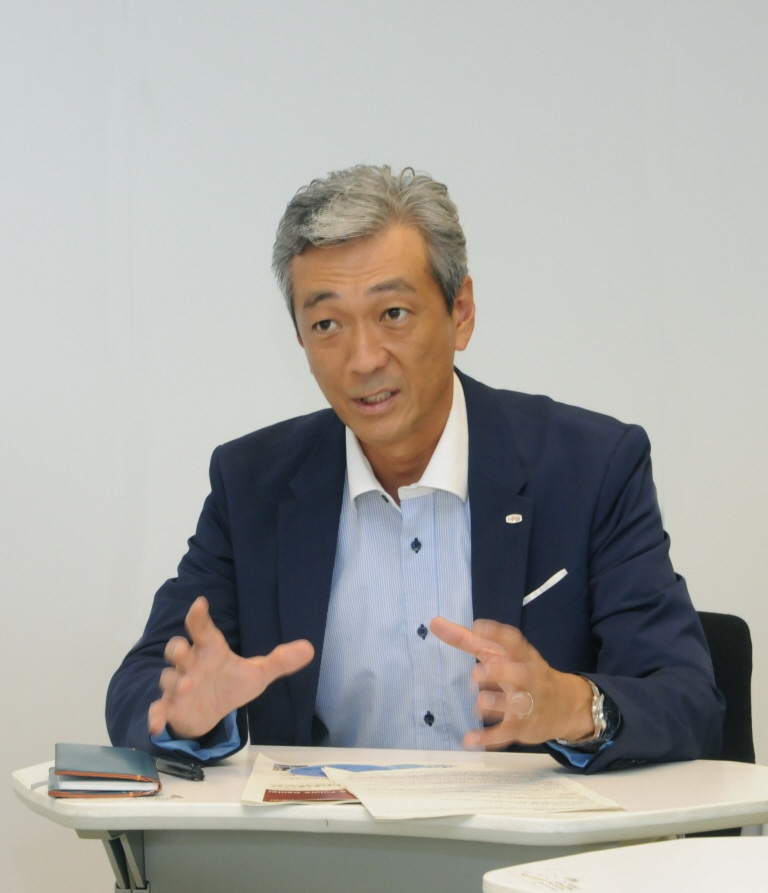
Ryosuke Oketani, General Manager, Fujitsu FSAS Inc.
“Location is a pivotal factor…when it comes to making new connections.”
I’d like to talk to you all about your urban R&D. Fuji Xerox has been expanding in the Minato Mirai district for a long time now. Would you like to start us off, Mr. Inagaki?
Inagaki (Fuji Xerox): Sure. The conversation touched on consumers before, but since we are B2B, our customers aren’t individuals living in the area so much as large companies with offices in the area. As for our workers, if we were to gather researchers from outside of Yokohama, they’d be coming in and asking “So everyone, what’s going on here, what are the problems?” And the further they’re coming in from outside the immediate area, the harder it is for them to connect with and understand those local issues. We want ourselves and our customers to be working closely together so we can be on the same page and share in the same issues. It’s difficult to visualize the area or meet with people if you’re not right there. Also, if you’re making something like an Innovation Center, you’re going to naturally want clients and guests to be able to visit you on-location, so if that means they have to travel to get to you, it all hinges on how convenient the transportation options are… Essentially there are many reasons. But I think it just comes down to the fact that location is a pivotal factor because it affects communication with clients and customers.
Additionally, we’re in a looser labor market right now, but if you talk to a recruiter I think they’ll confirm that there’s been a recently trending uptick of younger people who just won’t want to work for you if you aren’t near an urban center. [Laughs] Compared to before, when our office was outside Yokohama, I’ve heard from recruiters that many of the applicants who make it through interviews are now making comments like “It’s in Minato Mirai, and the building itself looks awesome, so it’d probably be a pretty neat place to work!”
Nakanishi (Shiseido): Our new research center in Yokohama, the “Global Innovation Center (GIC),” is very close to being completed [Editor’s note: GIC opened on April 13, 2019], and there were two main reasons why we chose to locate here. First, research is our specialty, but we had a very strong desire internally to bring the science and lifestyle aspects of our work to the same level. We wanted to follow the lifestyles of our customers, and combine that with research data to bring about innovation. That desire led to our choice to open a research laboratory in the Minato Mirai district. Compared to our current base research location, I think being located near Yokohama station will be a pretty nice change of pace. I foresee it being easy for our researchers to live and commute here.

Yuko Nakanishi, Manager, Shiseido Co., Ltd
The second reason is that while the majority of our planning and work will be within the metropolitan area, Yokohama’s Minato Mirai district has the advantage of simultaneously being close to the metropolitan area, the factories, and the airports, which means that it’s also closer to international connections and business. I mean, just the fact that it puts us near other companies is an attractive factor on its own. A moment ago, Mr. Ushio brought up “new combinations…” Well, if you’re not in a situation or place like that where you’ll be encountering new value and new technology, innovation is that much harder to come by. So we’re definitely trying to keep an open mind for leads on new combinations. Being near Yokohama station, I think the trends of people’s lifestyles and tastes are going to be very clearly observable, which is quite a compelling factor for us. Communication will be easier, and it’ll be easier to follow trends.
Ushio (Murata Manufacturing): In our case, we have an R&D base in Shiga prefecture, and there we began to realize that to drive and generate new business we should start pursuing open innovation. Now, ten years later, we’ve already worked on a number of initiatives related to that. The primary question is always “Who can we connect with and how?” Even if you’re in a good location, it isn’t very likely your researchers are just going to naturally strike up a conversation and make those connections with people outside your company. [Laughs] So in wanting to create those opportunities we held events in Osaka and Tokyo. But only about once per month, if that. Just getting to Osaka from Shiga in the first place takes around two hours each way. [Laughs] Being able to meet people on a more regular basis, and make those important connections will ultimately, I think, lead to joint development and industrialization.
When we’d realized “Location is the issue when it comes to making promising connections,” that happened to be around when we heard talk of a new office building being built here in Minato Mirai. That’s when we started debating internally, thinking “Well, if we go there we can try open innovation and meeting with other companies.” What we were most excited about was that because it’s such a densely populated business district, there are also a lot of companies with headquarters or R&D offices accumulated there. There aren’t many places with regional advantages and potential comparable to those of Yokohama, no matter where you look in the world. I think it was extremely fortunate we had the chance to come here. I believe this could be a place where companies are able to regularly, on an everyday basis, lower the walls of corporate secrecy enough to naturally collaborate and share skills, ideas and technology… For example, if we can get more and more spaces and chances popping up here where all of the neighboring companies will be able to meet, where local events could be held almost every single day… If, in the future, this area becomes one in which those kinds of opportunities are regularly, routinely available and taken advantage of… innovation will certainly come from that. That’s an ideal situation, in my view.
Of course that’s not something that businesses can bring about on their own, so if and when it ever comes to the point where we were actually considering public implementation of a program like that, it would undoubtedly be necessary to get input from the City of Yokohama, and the participation of Yokohama’s citizens. And that’s where the merits of being located in an urban area are apparent. That’s what’s so extremely attractive about an area like Minato Mirai, where so many various companies and people are assembled. New business is just a numbers game. So we’re looking to increase the number of connections we can make here.
Oketani (Fujitsu FSAS): “A city overflowing with diversity: where regional and temporal characteristics— “domestic and foreign,” “historical and futuristic”—all intersect. That’s the image that our company has of Minato Mirai. Honestly, there was a strange, almost coincidental series of events that led to us opening our center in MM. We used to have an educational facility near Shin-Kawasaki Station, but it actually ended moving to Yokohama (the Kannai district). But then the Tohoku Earthquake in 2011 happened, and we had to start considering moving to a more earthquake-proof location for the future. We used to have a branch of our business in Yokohama’s Landmark Tower, and at this time it just so happened that two floors (the 9th and 10th floors) of the B Tower of the Queen’s Square buildings in Minato Mirai were unoccupied. I had received the following piece of guidance and advice from Professor Konno Noboru of the TAMA Graduate School of Business and Representative of the Information and Innovation Research Center (KIRO): “To innovate, you need a space where you can interact with many other people.” And that was enough impetus for us to lock down the 9th floor to begin establishing our “Innovation and Future Center.”
In terms of location, I mean, the view is absolutely gorgeous and it looks out over the sea too, so… [Laughs] That’s not a perk you really expect when you think “urban center.” Minato Mirai is continuing to develop. It has a sense of newness to it, but it still feels like a “port” too, so there’s this feeling of international connection. For our facility we’re going with a design that is open and does away with barriers as much as possible; one that integrates with the location and the surroundings in a way that people can enjoy. Actually, even for clients and guests that would have to travel a fair distance to get here, Minato Mirai is such an open, relaxing location—a welcome break from most people’s normal urban lifestyles—that conducting workshops here has proven very popular. We opened in MM relatively recently, but even still I’ve already received word that we’ve had great results so far as a result, not just limited to corporate exchange: since the atmosphere of Minato Mirai appeals to the younger generations of workers, our company benefits from that appeal as well, and it has positively affected our talent acquisition.
A place that brings people together
What are your future hopes or expectations from Yokohama?
Inagaki (Fuji Xerox): This is going back a bit in time, but I honestly wish more of the other companies that are in Minato Mirai now had come here 10 years ago. But 10 years ago was also about when the Lehman Bankruptcy happened, I suppose… We set up here in 2010, and the year before that Nissan had moved their global headquarters here, but in R&D it was just us. Construction had paused so from 2013 to 2014 there was basically nothing happening. So we were asking ourselves, being B2B, if there wasn’t anything we could do to bring customers here. And we made efforts in that direction too. But about 3 to 4 years ago, the situation started to change. We realized other companies were expanding into the area, and the City of Yokohama devoted itself to the cause too in a major way. So while it used to be the case that people were thinking about their own business’ ideas and needs and only engaging in “open innovation” with specifically targeted partners, soon everyone started saying “let’s use this space to bring more people in, let’s address social issues, let’s aim higher.” That was about 2-3 years ago. The City of Yokohama declared that it has plans to build some sort of center as well, so they’re clearly focused on getting people together and enriching the area even more.
One other thing I want to touch on is the City of Yokohama’s plan for an “Innovator’s Community”. The startups and SMEs in Kannai district are the main focus there, but the City of Yokohama is trying to establish and host a platform where those smaller companies can engage with larger corporations to essentially create something bigger than all the individual parts. SMEs and large corporations are equally interested in innovation, so if the platform works out, it’ll be win-win for everyone involved.
Also, the topic came up already in the conversation but when it comes time for “public implementation,” if companies are individually approaching the city government, they aren’t going to get very far because of the laws and restrictions in place. But on the other hand, if it’s the City of Yokohama initiating things, reaching out to everyone and saying “Hey let’s do this, and here’s how we’ll do it,” a lot could get accomplished together. That’s what I’m really excited for. If that framework was created for us it would be much easier for companies to get on board. Compared to trying to consult and compromise with the heads of each individual company, which would be very difficult.
Ushio (Murata Manufacturing): I do think we shouldn’t unilaterally rely on the City of Yokohama, however. It’s important that the actions on both sides—the government and the businesses—should be in sync. The “Innovator’s Community” is an idea that I am extremely hopeful for, and I very much agree with. I even like the name. It puts the focus on the people—the innovators. Getting people from different companies and startups together is something that we in the private sector likely couldn’t do if we were leading it. That’s where I hope we can rely on the city government. As for our part in it, I think it comes down to how much large corporations can afford to send out their innovators. If no one comes out to join this community, we won’t see any new business come out of it.
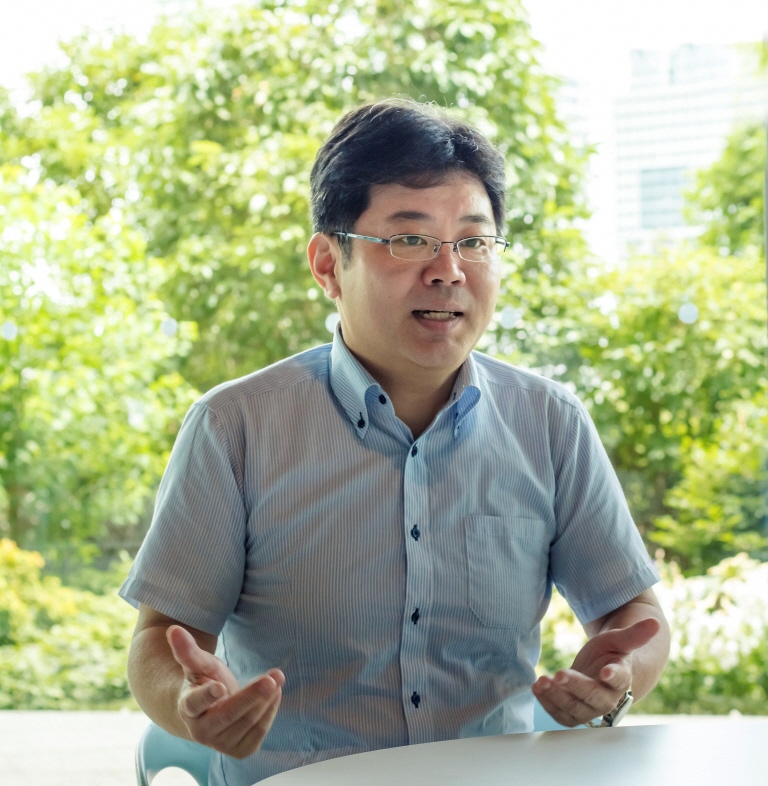
Ryuichi Ushio, Open Innovation Promotion Team Manager, Murata Manufacturing Co., Ltd
Also, for public implementation, I think the sense of speed is the key there. When a single company works with a national or city government, things tend to slow down very quickly. And business at that speed definitely isn’t going to win on the world stage. For example, the speed and momentum of China right now is amazing, frankly. The city of Shanghai, which has a population on par with entire countries, is one of China’s special economic zones. Startups and business have more freedom, which was a very intentional move by the government. We can’t win against that. At least not if, right after an idea comes out of Minato Mirai and get publicly implemented, we’re already trying to wring results from it. So that side of the process does depend a bit on how much the City of Yokohama is able to strip excessive regulation and entice the private sector. But that kind of arrangement, one that allows for quick decisions and momentum, is something I’m very hopeful for.
Oketani (Fujitsu FSAS): There have been more efforts in Japan recently to connect startups and small enterprises, like the coworking spaces being prepared across several older and newer buildings near Tokyo Station, but Yokohama has always been the ahead of the curve, and has so far been very consciously tacking these issues. Tokyo’s initiatives have focused on the “Daimaruyu” area (made up of the Otemachi, Marunouchi, and Yurakucho districts around Toyko Station), but Yokohama has a youthful vibe, one that likewise attracts many younger people. I get the feeling that there are a lot of those people thinking “I’d love to work in Yokohama.” I’m also aware that there’s been a desire to hold events where young people can gather even just at our center. While I imagine young entrepreneurs, and young, ambitious, and spirited employees of larger businesses will be the main target of the Innovator’s Community, I look forward to this kind of community development that would enable these people and others interested to participate actively.
Inagaki (Fuji Xerox): I have one thing I’d like to add on to that, if I may. One of the special traits about this area is that there are many different universities accumulated here. I hear that Kanagawa University students often come out to Yokohama, but even if we just look within the immediate area there’s Yokohama National University, and there’s SFC (Keio University Shonan Fujisawa Campus) just to name a couple. It’s a great boon to have all of these universities with strong science and technology programs nearby.
The relationship between these universities and the businesses up until now hasn’t concerned much more than intellectual property rights and outsourcing. I think if the City of Yokohama gets involved and helps facilitate, it would go a long way toward solidifying a new connection between the public and private sectors, and academia. Whenever we go to create connections with Universities it usually just ends up with another laboratory or seminar room being built.
Ushio (Murata Manufacturing): I’d like to bring art into the conversation as well. Many people have been talking about the marriage of art and technology. Yokohama is notable for its artistic community, showcasing art that represents all of Japan. It’s very interesting that the same place also attracts so many engineers. Art multiplied by engineering equals Yokohama. There’s already a term for “art thinking” (referring to using an artistic standpoint to approach traditional business), so I’d say that that combination is working pretty well already. I think you could absolutely call that another advantage of Yokohama.
Nakanishi (Shiseido): Like the Yokohama Triennale. I don’t know about all of you but I always look forward to that. [Laughs]
Ushio (Murata Manufacturing): I’ve always felt that specific event was more strictly art-related; like an art festival. But now I’m wondering about how it would change if technology was really added into the equation there… That could very well be its own form of innovation.
New challenges, with changing businesses and changing people
Do you have any comments on the future of innovation and Yokohama?
Inagaki (Fuji Xerox): Recently, large corporations have been so worried about being labeled a “Black company” (which in Japan means a company that undervalues and overworks their employees), that I get the feeling they’re trying a little too hard to “Whiten” themselves, if you know what I mean. [Laughs] It used to be that after work ended, your boss might take the employees out to do something, or you could have a book club with your coworkers… but now most bosses will just tell you “Go home!” [Laughs] It used to be that you’d be able to do so much at your workplace, even things not directly related to work, but now most people do those things at home instead. It turns out many people actually wanted a separate, third place to spend time, besides at home or at their company, so around 3 or 4 years ago we told them “Why not use this [joint venture laboratory]?” That chain of events gave eventually led to the creation of the “Gadget Festival,” a space for exchange between engineers and company workers, entrepreneurs, students, and children. I think Minato Mirai is a great place for workers who have finished their work for the day to gather.
You could think of this “third place” like a clubhouse where you can do any number of things independently. And I bet even your friends who live in the city center will come out to a place like MM to join you, so it’s perfect. We want to make sure this is a great place for the people that want to come here and use the space.
Nakanishi (Shiseido): I’ve personally had the chance to participate in more community events recently, and there really are so many people with their own unique work styles. It’s like an after-school program for working adults. When you’re working at a research facility, there aren’t very many people with that kind of time to spare. And even if you’re working on something in-house, it’s never the kind of situation where you could discuss it openly with people in other companies. If that could be changed, however, I think it would bring with it a welcome change to the companies themselves, not to mention the lives of their employees. I believe those changes will be accompanied by other changes in ways of conveying information and even ways of thinking, and that’s something that I personally am very excited by the prospect of.
Ushio (Murata Manufacturing): Japan is currently on the advent of great change, and it just so happens that we’re here now, right in the middle of it. This is an opportunity for us. Moreover, people are going to be drawn to a newly established place like this. The timing of being here, and having a place like this where you’re able to be working on what you personally enjoy doing, while being involved with this kind of change, it fires you up! Makes you want to get up and shout “I’m gonna do it, whatever it takes!” [Laughs] I think that people experiencing open innovation have begun to realize “Not everything has to be about my company anymore.” It does make me wonder how it’s going to affect businesses’ and people’s ways of working. This is going to be an exciting place, where people can challenge old ideas and create new ones, and I very sincerely hope that there are many other likeminded people who will work here with us.
Oketani (Fujitsu FSAS): If you look at Yokohama City as a whole, or Kanagawa Prefecture as a whole, there are many different societal issues that have begun piling up. For example, places that used to be popular that are being slowly abandoned by the younger generations, there was a tv show in the 80’s that made a certain station and the area around it very popular but recently interest has waned, that kind of thing. Besides just making Yokohama into a better city, I think that the “innovator’s Community” is a chance to start addressing those issues. It’s something I’m extremely excited to see.
Also, compared to an area in Tokyo like Daimaruyu where large corporations are densely packed, I think of the Minato Mirai area as a place where there’s a feeling of affinity, of cooperation… which extends, I believe, to a sense of solidarity between the people who work here. Even more businesses are going to come here in the near future, and I get the feeling there are going to be some truly amazing things happening here. Living in Yokohama will mean getting to meet with employees from other companies in a natural, cooperative setting, and having access to a wide pool of information about different corporate culture, local issues, that even extends beyond your own work. There’s a lot of excitement and expectation for the future.
(Interviewed at the Fuji Xerox Customer Co-creation Laboratory, and the Fujitsu FSAS Innovation & Future Center in Yokohama)
Profiles (In order of appearance)
Masatomi Inagaki, Senior Manager, Fuji Xerox Co., Ltd Customer Co-creation Lab
Born in Aichi Prefecture. After graduating from Nagoya University’s Information Science graduate program, he joined Fuji Xerox Co., Ltd, working on AI Development, which led to completing the SDM Program abroad through MIT’s Graduate Studies. After returning to Japan he led the formulation of IT and entrepreneurial strategies, and ubiquitous computing projects. As the leader of the 2007 R&D Relocation Project, he’s worked on the Customer Co-creation Laboratory’s conceptualization, implementation, and management.
Ryuichi Ushio, Manager, Open Innovation Promotion Team, Murata Manufacturing Co., Ltd New Business Development Department
Born in Hyogo Prefecture. After joining Mitsubishi Chemical Corp. in 1991 and heading hard disk media development and the launch of a factory in Singapore, he joined Murata Manufacturing in 2001 to lead multilayer ceramic capacitor development and production. In 2008, he received a Master’s in Management of Technology (MOT) from Ritsumeikan University, and then as the Manager of Murata Manufacturing’s Technology Planning Department, he led company-wide strategy planning. In 2012, became head of Open Innovation Promotion, and built the Open Innovation Center at Murata’s Yasu City R&D location.
Ryosuke Oketani, General Manager, Fujitsu FSAS Inc. Innovation & Future Center Total Service Promotion Department
Born in Tokyo. Graduated from Waseda University’s School of Commerce in 1995. Began work at Fujitsu FSAS in 1998, where he was in charge of the planning of service products and sales promotion. Handled new social business relations services and work-style-related products like overwork prevention software (2010) and office renewal services (2013). After participating in the Innovation Leader Program led by Professor. Konno Noboru of the TAMA Graduate School of Business’s Information and Innovation Research Center (KIRO), Mr. Oketani achieved his current position of General Manager in 2018.
Yuko Nakanishi, Manager, Shiseido Co., Ltd R&D Strategy Department
Born in Gifu Prefecture. After receiving a degree from Nagoya University’s Graduate School of Science’s Chemistry Department she joined Shiseido, researching prescription skincare product development and cosmetics. Currently she works with Shiseido’s R&D Strategy Department and Research Planning. Recently she’s been involved with research into understanding diversity, sublimation of technology into meaningful descriptions, science and digital technologies, and the fusion between science and digital technologies and art.
Original Article: https://yi.city.yokohama.lg.jp/voice/voice8/
Learn more:
Yokohama’s Featured Business Districts
Read more of our Innovation Interview Series
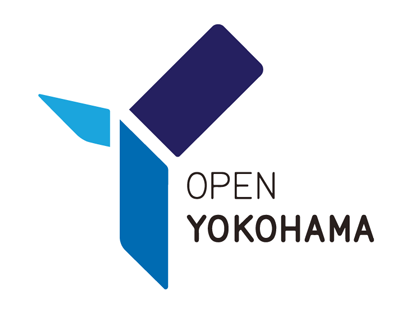
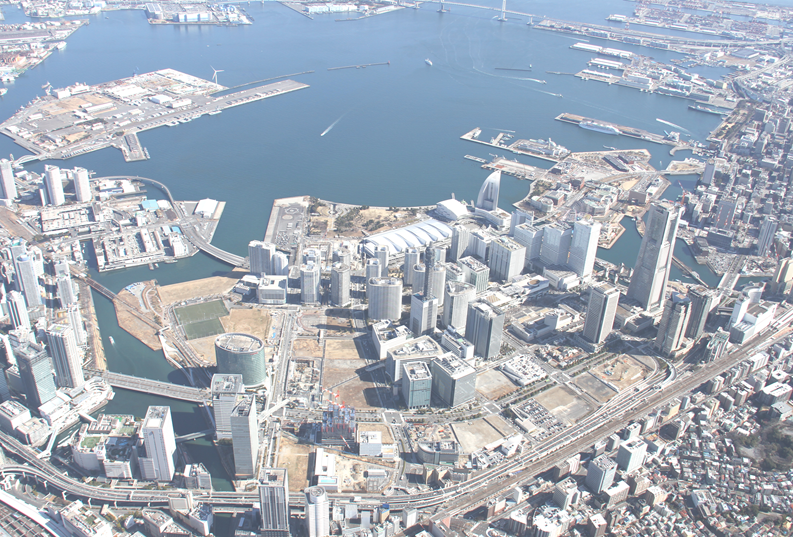
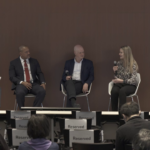

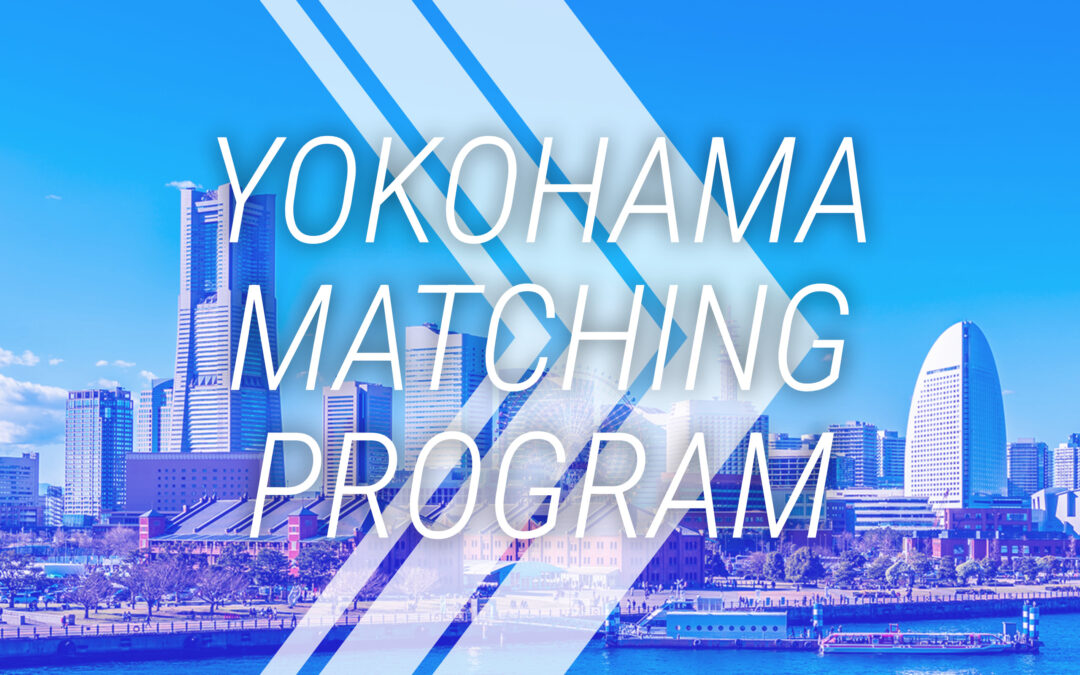

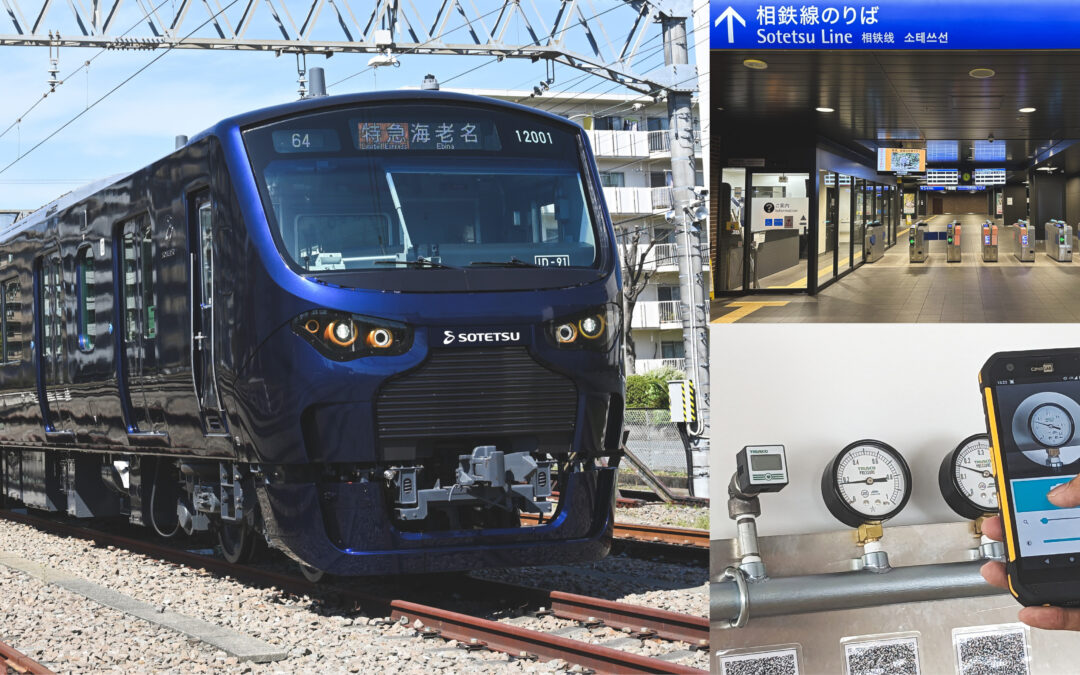
-1080x675.jpeg)
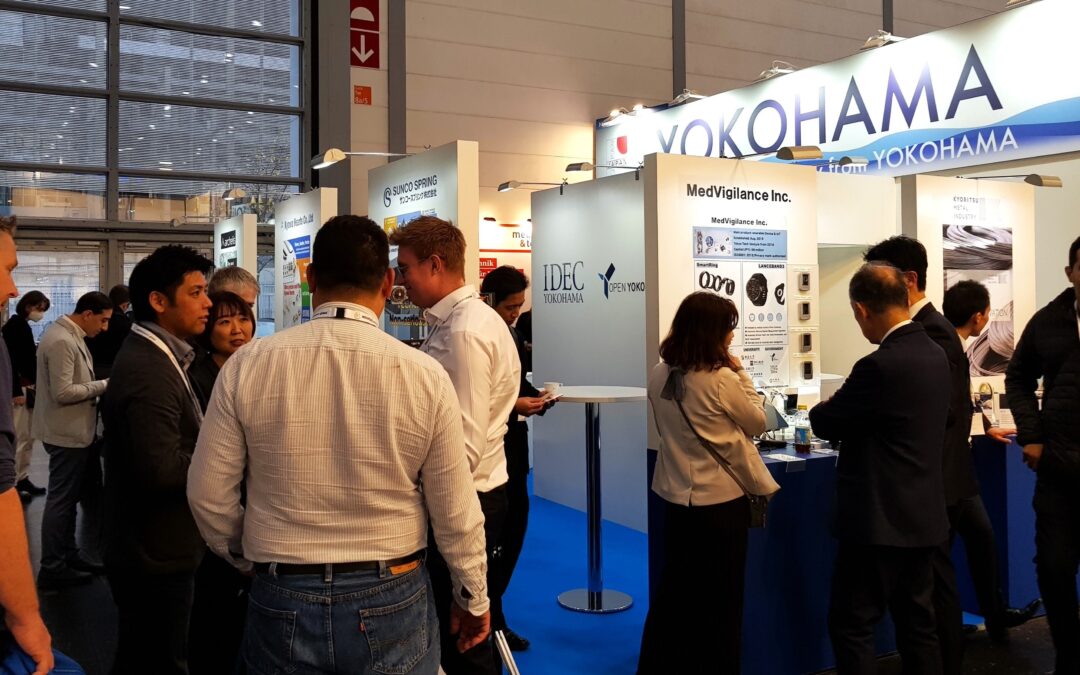



-400x250.jpeg)